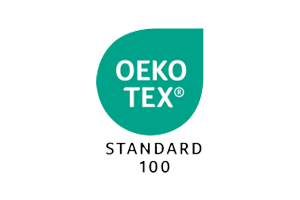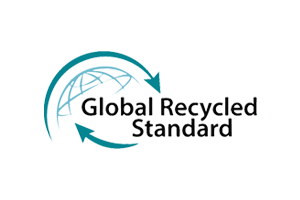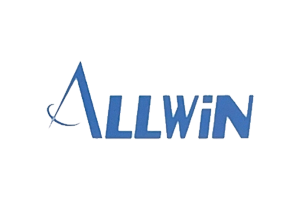Fabric Speak for Apparel
Stretch Fabric Terminology

Stretch Fabric Terminology
1. Stretch Fabric
Fabrics that can stretch and return to their original shape and size after being stretched. Commonly used in garments requiring close fit and comfort.
2. Spandex
A highly elastic synthetic fiber, often blended with other fibers to enhance the elasticity and comfort of fabrics. Common brand name: Lycra.
3. Elastane Fiber
Also known as spandex, it is a fiber that can be stretched to several times its original length and return to its original state. Widely used to enhance the elasticity of various garments.
4. Two-Way Stretch
Fabric that stretches in either the horizontal or vertical direction, but not both.
5. Four-Way Stretch
Fabric that stretches in both the horizontal and vertical directions, allowing it to stretch in all directions. Typically used in sportswear and close-fitting garments.
6. Composite Fabric
Fabrics made by combining multiple layers of different materials to achieve combined benefits, such as windproof, waterproof, and breathability.
7. High Stretch
Fabrics with extremely high extensibility and recovery, typically used in sportswear and shapewear.
8. Fabric Weight
Usually measured in grams per square meter (g/m²), indicating the thickness and density of the fabric. Lighter fabrics are suitable for summer clothing, while heavier fabrics are suitable for fall, winter, or shapewear.
9. GSM (Grams per Square Meter)
A standard unit for measuring fabric thickness and density. For stretch fabrics, higher GSM usually indicates stronger durability.
10. Fabric Density
The density of yarns in the fabric, the higher the density, the thicker the fabric, suitable for making opaque and supportive clothing.
11. Compression
The degree of support and wrapping of the fabric to the muscles. High compression fabrics are often used in shapewear and sportswear to reduce muscle vibration during exercise.
12. Moisture Wicking
Fabric's ability to quickly absorb and expel sweat from the skin surface, keeping the body dry. Often used in stretch fabrics to enhance wearing comfort.
13. Breathability
The ability of fabric to allow air and moisture to pass through. Breathability is an important factor in ensuring comfort for stretch fabrics.
14. Abrasion Resistance
The ability of fabric to resist wear and tear. High abrasion-resistant stretch fabrics are suitable for high-intensity sports or garments requiring high durability.
15. Pilling Resistance
The ability of the fabric to resist the formation of small balls on its surface due to friction. High-quality stretch fabrics typically have good pilling resistance.
16. Recovery
The ability of the fabric to return to its original state after being stretched, an important indicator of stretch fabric quality.
17. Warp Knitted Fabric
Fabrics made by multiple sets of parallel yarns in the warp direction, forming a tightly structured and stable fabric. Typically offers good elasticity and recovery, commonly used in functional clothing.
18. Weft Knitted Fabric
Yarns arranged in the weft direction, forming spiral-shaped loops. Fabrics are soft and comfortable but less stable than warp-knitted fabrics. Often used in T-shirts, underwear, and other close-fitting garments.
19. Double Stretch
Fabric that has elasticity in both horizontal and vertical directions, though to varying degrees. Suitable for garments requiring both support and comfort.
20. Stretch Recovery Rate
The percentage of the fabric returning to its original length after being stretched. A high recovery rate indicates that the fabric is less likely to deform after multiple stretches.
21. Stretch Modulus
The elongation rate of the fabric under a certain stretching force, reflecting the softness and stretchability of the fabric. Fabrics with high stretch modulus typically provide more support.
22. Bending Rigidity
The ability of the fabric to resist external force during bending, reflecting the softness of the fabric. Lower bending rigidity indicates a softer and more comfortable fabric.
23. Shape Memory Fiber
A type of intelligent fiber with shape memory function that can return to its original shape under heat or other external conditions. Widely used in high-end fashion and functional clothing.
24. Luster
The degree of light reflection on the surface of the fabric. Fabrics with high luster are usually more fashionable and eye-catching. High luster stretch fabrics are often used in sportswear and high-end fashion.
25. Skin-Friendly
The comfort of the fabric when in contact with the skin. Skin-friendly fabrics are usually soft and breathable, suitable for making underwear, close-fitting sportswear, etc.
26. UV Protection
The ability of fabric to block ultraviolet rays, usually indicated by UPF (Ultraviolet Protection Factor) values. Suitable for outdoor sportswear in stretch fabrics.
27. Elastic Fatigue
The loss of elasticity of the fabric after long-term repeated stretching. Fabrics with low elastic fatigue can maintain their original elasticity even after multiple uses.
28. Knitting Density
The number of loops per unit length or area. Fabrics with higher knitting density are usually more compact and provide better support and durability.
29. Composite Stretch Performance
Evaluates the stretching performance of fabrics blended with various fibers in different directions, an important indicator of fabric functionality.
30. Curling
The phenomenon of fabric edges curling during cutting or use. Curling is a common issue in stretch fabrics and requires process treatment to reduce curling.
31. Stretch Coefficient
A quantitative indicator that represents the range of stretching and recovery of a fabric, typically used in garment design and manufacturing to calculate the required amount of fabric.
32. Deformation Rate
The degree to which the fabric deforms during stretching or use. Fabrics with a low deformation rate can better maintain their original shape.
33. Waterproof Breathability
The fabric's ability to be both waterproof and breathable, commonly used in high-end sportswear and outdoor clothing.
34. Quick-Dry
Fabric's ability to quickly absorb sweat and evaporate it, keeping the wearer dry and comfortable. An important feature in sports and leisure stretch fabrics.
35. Anti-Static
Fabric's ability to effectively prevent the accumulation of static electricity, reducing the attraction of dust and particles. Often used in high-tech functional fabrics.
36. Anti-Bacterial and Odor Control
Fabrics with antibacterial and odor control properties can effectively reduce bacterial growth and improve hygiene and comfort. Suitable for underwear and sportswear.
37. UV Resistance
The ability of the fabric to resist ultraviolet radiation, preventing fabric from fading and becoming brittle due to UV exposure.
38. Wrinkle Resistance
The fabric's ability to resist wrinkles during use, suitable for garments that need to maintain a neat appearance for a long time.
39. Color Fastness
The ability of fabric to maintain its color without fading under washing, rubbing, and sunlight exposure. Fabrics with high color fastness have better durability and appearance.
40. Fabric Stretch Test
A standardized test method to evaluate the stretchability and recovery performance of the fabric, commonly used to test the elasticity, stretch recovery rate, and other indicators of the fabric.
Start Your Customizing
Get a Free Quote
- Get a Free Quote
- Tel
FAQ
Frequently Asked Questions & Answers
- Is there a minimum order quantity?The Company may have minimum order quantity requirements to ensure a cost-effective production and shipping process. These minimum order quantities may be based on factors such as production capacity, packaging limitations, or logistical considerations. Customers may consult directly with the Company to determine if minimum order quantities are available and to discuss any possible exceptions or arrangements based on their specific needs.
- What about your quality control system?We conduct standardized tests on our products and have designed a range of innovative technologies to meet the diverse needs of our customers and the comfort and reliability levels of our users. Contact us for more product test reports.
- What is no PFC?1. PFC-free means that the fabrics do not contain perfluorocarbons, or PFCs for short, making them greener, more environmentally friendly and healthier, as Greenpeace International has long called for. 2. PFCs are commonly used as water and stain repellent coatings on textiles and are difficult to degrade in the environment. Studies have shown that some perfluorinated compounds, such as PFOA, are bioaccumulative and can continue to accumulate in the human body
- What about mass fabric production lead times?1/Small order: 13-20 days for production. 2/ Bulk order: 20-40 days according to your order. For special urgent order, we can help to arrange faster. 3/Shipping time: about 3-7 days by express or air freight if small quantity. 4/ If bulk quantity, about 30-45 days by sea according to your seaport.
- How can I get fabric samples?1.Typically, our company encourages viewing of samples. We are actively involved in these types of interactions in order to allow potential customers to see their products first hand and demonstrate their quality and functionality. 2.If you would like to schedule a site visit or request samples, it is best to contact our company directly as we may have specific procedures or requirements for scheduling visits or sending samples.
- Does the fabric product maintain high quality standards?Whether a product meets environmental or quality standards depends on industry regulations, company practices and other factors, common standards include HIGG FEM Environmental Module Certification, ISO 9001 Quality Management, GRS (Global Recycled Standard) Environmental Recycled Fabric Certificate and other certifications.
Certification
Accreditations and Certificates
- Tel
- *Title
- *Content




